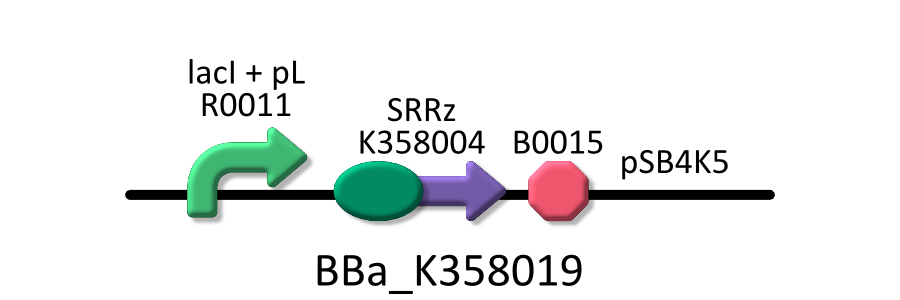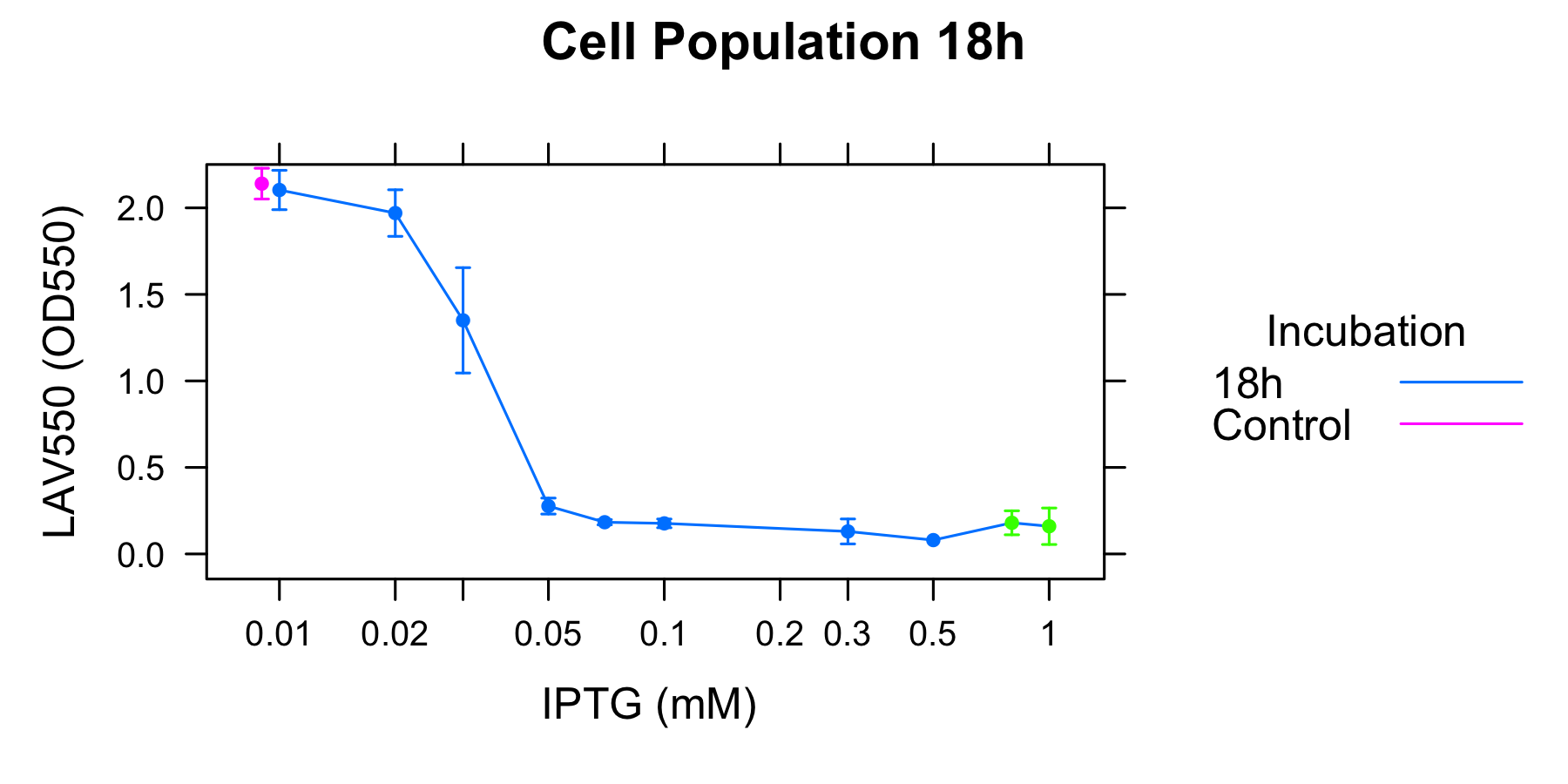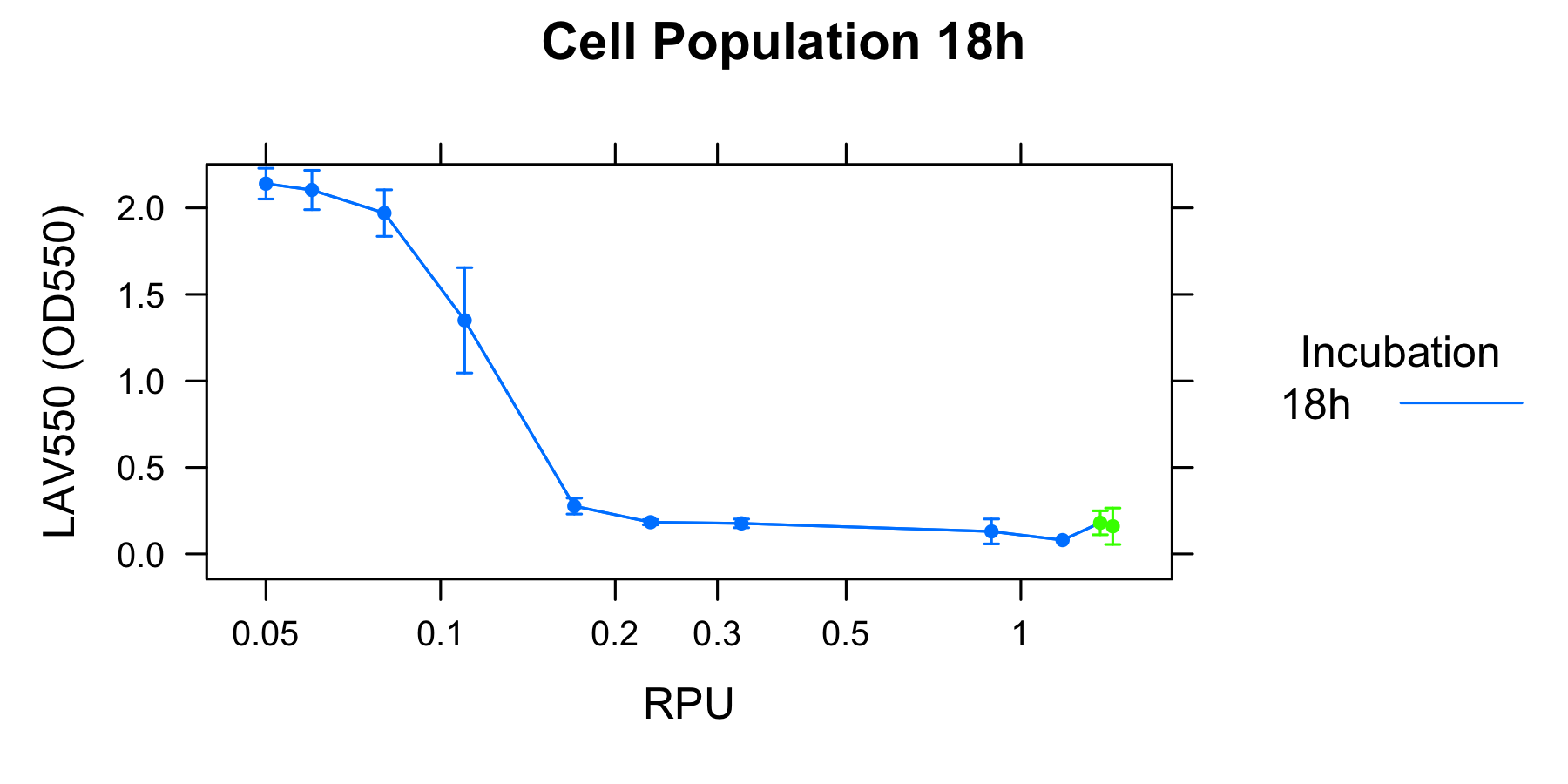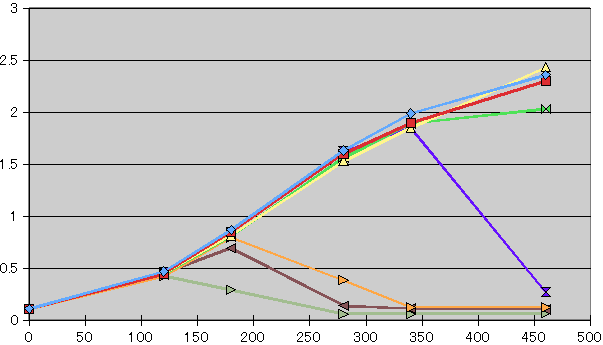Team:Kyoto/Project/Goal B
From 2010.igem.org
Contents |
Goal B: Characterization of λ Lysis cassette
Introduction
λ Lysis cassette is a gene that causes cell lysis. In previous iGEM, some teams evaluated the lytic activity of λ Lysis cassette qualitatively. However, when we considered λ Lysis cassette not only as a device of cell lysis but as a device of cell death, we must study about λ Lysis cassette more quantitatively. For example, we must study about when cells die, how many cells die, and the relationship between them and the activity of their promoter.
Construction
To characterize the lytic activity of Λ Lysis cassette quantitatively, we regulate the gene expression of λ Lysis cassette by a lactose promoter, R0011, which we characterized quantitatively by RPU in GoalA. To repress the basal expression of λ Lysis cassette without IPTG as possible, we used pSB4K5, a low copy vector, as a plasmid backbone and used KRX as a host cell. Needless to say, we characterized R0011 in the same experimental condition. For more detailed explanation of the characterization of R0011, go Goal A
Result
Experiment 1 Mesurement of lytic activity of λ Lysis cassette
To characterize the lytic activity of λ Lysis cassette quantitatively, we made another mesurement standared of cell lysis. we considered that we could characterize the lytic activity of λ lysis cassette by mesuring A550 of the cultures after induction of IPTG.However, we did't know the nature of it, so we couldn't characterize λ Lysis cassette quantitatively if we cheese the best timing of mesurement. As we did some experiences, we earned some facts by try and error. ・Cultures induced the expression of λ Lysis cassette becomes a kind of equilibrium state of cell lysis. ・R0011 is very easy to have mutation at 37 if it regulates expression of toxic gene because of natural selection. ・The possibility of mutation become low at 30, although わずかな変異の可能性はあるが
Therefore, we made a mesurement standard that is suitacle to our experiment.
Pick out three colonies that is transformed with and cultivated in suppemented M9 media with various concentration of IPTG.After incubation of 16h,18h,20h, mesure A550 of each culture.
We did the experiment as this protocol, we got the following data.
Table 1 A550 of the cultures incubated 16h, 18h, 20h, in various concentration of IPTG.
As table1, the cultures surely get to the equilibrium state of cell lysis depending on the cocentration of IPTG, and we considered that the number of A550 have a quantitative of the lytic activity.
Experiment 2 Mesurement of the lytic activity in overnight cultures
We picked out three colonies for the device and cultivated in supplemented M9 media in various concentration of IPTG. After 16h, 18h,20h incubation, we measured A550 of the cultures.
Fig.1 A550 of 18h cultures in various concentration of IPTG. When the concentration of IPTG is from 0.01mM to 0.02mM, A550 decreases mildy. When the concentration of IPTG is from 0.02mM to 0.05mM, A550 decreases dramatically. When the concentration of IPTG is over 0.05mM, A550 is under 0.3 and doesn't change largely.
Fig.2 Fig.2 is the figures that the horizontal axis of Fig 1 is converted to RPU using the characterization of R0011 りんくよろ. RPU is the absolute activity of promoter, so Fig2 shows the relationship between the lytic activity of λ Lysis cassette and the induction of λ Lysis cassette.
Experiment 3 Measurement of lytic activity with time
Discussion
Equilibrium state of cell lysis
Checkpoint of whether cell lysis occurs
Initiation of cell lysis
Possibility of a system controlling cell populatiuon
References
1 2 3
 "
"






